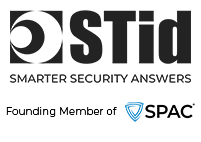STid Offers High Security with Seamless Access Control Experience
The physical and cyber security threats for companies and the consequences of the health crisis have had an enormous impact on the perceived needs and requirements for access control and security. Vincent Dupart, STid’s CEO, and François Gitz, STid’s Sales Manager, talk with GIT SECURITY about this matter.


What are these new challenges of the access control market?
Vincent Dupart: The access control market is taking a decisive turn towards a contactless and frictionless user experience. Today, more than ever, the security and access control need to be flawless. As a fact, the IT infrastructure of both large and smaller organizations are increasingly subject to attacks. And these attacks occur both in the physical and the digital reality. For example, an ill-intentioned person, with physical access to an organization’s server room or even a workstation connected to the network, can often easily find access to critical IT systems. The consequences can be disastrous. The complete infrastructure may be taken hostage or inaccessible, which will impact all business processes and endanger the continuity of the organization. The loss or theft of sensitive or confidential data may also have serious financial consequences and cause damage to the reputation of the company. Securing infrastructure and systems should not only be about information security. The physical security of IT facilities and also any physical access points to the network should be part of your security planning and policies.
How does STid help to protect against these threats?
Vincent Dupart: We have managed to combine two seemingly paradoxical requirements in our access control solutions: Ensuring a level of physical security that protects against cyber threats while offering a seamless user experienceby removing traditional identification technology constraints. We design and manufacture contactless identification systems and solutions for Physical Security, Logical Access Control and Automatic Vehicle Identification. With STid Mobile ID, the smartphone, our valuable personal device, becomes the access control key, offering improved operational effectiveness, flexibility and instinctiveness.
Ensuring a seamless experience for users should not imply adding holes to the security. Our main strength is our capacity to offer comprehensive and uniform end-to-end security. End-to-end security principles are applied to communication between the card and the reader including Mifare Desfire EV2/EV3 technologies, and also between the reader and the controller/LPU with systems capable of supporting OSDP and SSCP (Secure & Smart Communication Protocol) protocols.
STid is a firm believer in the concept of open technologies. We help organizations to depend less on proprietary technology and remain in full control of all components in their security chain. Our customers are not locked into a solution or tied down by proprietary technologies. This choice of positioning fully benefits our customers and partners.
You have mentioned the role of the SSCP protocol for security systems. What is this protocol exactly and how do your clients benefit from it?
Vincent Dupart: The SSCP protocol is used to implement a security systems topology that safeguards the integrity and confidentiality of sensitive data by using cutting edge encryption standards. This protocol is fully supported and maintained by the Smart Physical Access Control Alliance (S.P.A.C.). SSCP protects the communications of physical and digital access control devices. This standard provides unified protection for all your applications by protecting interface communications (RS485, USB, TCP/IP, etc.) It guarantees the interoperability of all equipment through conformity certification. Why? To build trusted solutions and provide true technological independence for greater freedom and sustainability. By applying STid technology, any access control system becomes instinctive and it will protect sensitive data much better. It is most important for us that all our access control solutions are future-proof and that we can adapt to any evolution of customer needs.
How do you adapt systems to the new security end-users needs?
François Gitz: Users are more likely to adopt simple and effective systems. At STid, we develop technology to make the everyday life of people easier while safeguarding effective data protection. STid readers and solutions are compatible with all access control systems currently available. The modular setup of STid’s unique readers futureproofs the infrastructure of end users and it allows tour partners to offer enhanced levels of security to their clients, even when their secured estates grow, or their requirements change.
Take for example the Architect RFID, NFC and Bluetooth reader with a built-in QR code module. Access control systems that support QR codes to identify people offer a cost-effective and reliable solution for visitor management within an office or other facility. QR Codes can be generated by existing systems/software and used in a paper format or they can be transferred to the smartphone (by email, virtual cards, etc.). Numerous deployments of this solution have proven that QR codes are an effective and relatively secure way to offer temporary access privileges to visitors, contractors, drivers and suppliers etc. You are now capable to identify and trace the whereabouts of these temporary users through the public zones of your secured facilities.
It is yet another example how STid is looking to provide you with solutions that are easy to deploy and use and that benefit the total security of your building and infrastructure.
Business Partner

STid Electronic Identification - EMEA Headquarter20 Parc d’activités des Pradeaux
13850 Greasque
France
most read

Light + Intelligent Building Middle East 2026
Light + Intelligent Building Middle East returns with record global participation
Media Kit 2026 GIT SECURITY International
Advertise with the international number one - with GIT SECURITY International. Media kit 2026 for download.

Intersec Dubai 2026
Intersec 2026 expands to meet record demand and align with UAE’s vision for a safer future

Hochiki Fire Detection System Secures Villa San Carlo Hotel
Wireless and hardwired fire alarm systems can be specified in hotel projects that demand architectural sensitivity

Leonardo Enhances EU Border Security with Entry/Exit System Data Protection
Leonardo secures sensitive data in the EU’s new Entry/Exit System, boosting border control and cybersecurity









